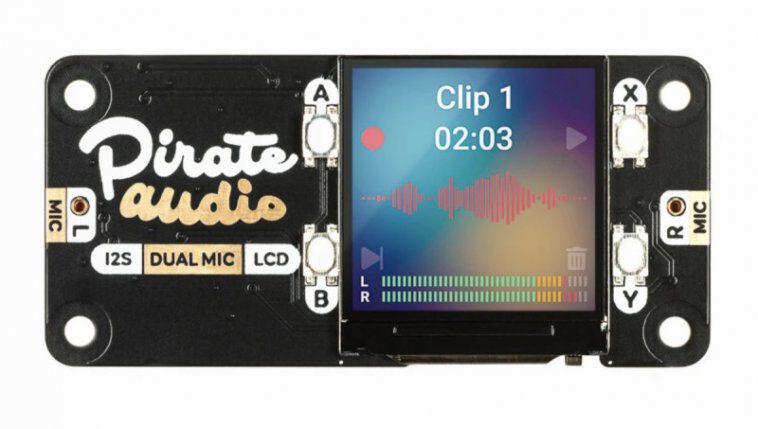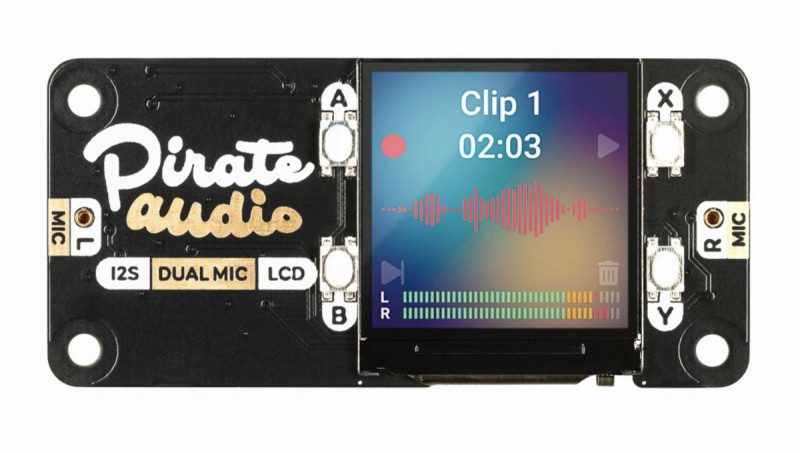This mini HAT looks very similar to other Pirate Audio products, with an integrated 1.3-inch colour LCD screen surrounded by four push-buttons. Located on either side of the board are two tiny digital microphones. These feature a SiSonic acoustic sensor, a serial ADC (analogue to digital converter), and an interface to convert the signal into the industry-standard 24-bit I2S format. In our tests, we found that they recorded sound with crystal-clear quality, although the mics aren’t that far apart so the stereo effect is limited.
Portable clip recorder
To make use of the Pirate Audio: Dual Mic, you’ll need to download the software; this involves entering three commands in a Terminal window to make all the necessary configuration changes behind the scenes.
One of two Python code examples is an FFT (Fast Fourier transform) program that shows the levels of various sound frequencies on a graph. The other is a simple audio clip recorder which uses the tactile buttons to record, play, skip, and delete clips. Playback (using PulseAudio’s ‘upmix’ feature to avoid resampling) is via HDMI by default and we couldn’t get it to output through Raspberry Pi’s AV jack unless we played the clips separately with OMXPlayer. Portable playback is problematic on a Raspberry Pi Zero (which lacks AV output), too, so you’ll need to use Bluetooth or also attach an audio board using something like the HAT Hacker HAT.
Verdict
8/10
High-quality audio capture in a small package that might be useful for a portable recorder or voice assistant project. It lacks its own audio output, though.



